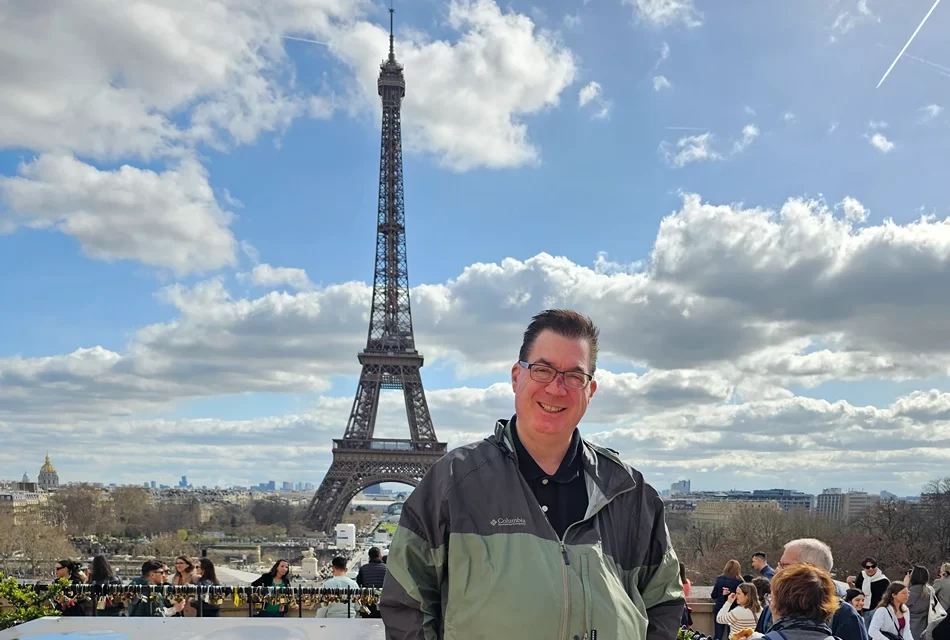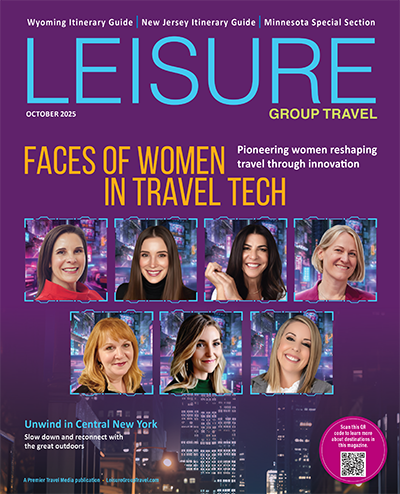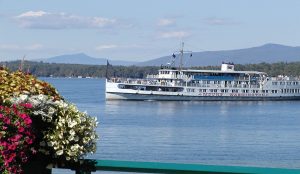An Interview on Accessible Travel with Ron Pettit
 How did you become involved in accessible tourism, and what has your journey been like?
How did you become involved in accessible tourism, and what has your journey been like?
I developed my passion for making travel accessible while I was working at Northwest Airlines. I spent my early career interacting with customers with disabilities while working the front-line as a customer service agent for Northwest at Worcester and Boston Logan airports.
Eventually I went to work at Northwest headquarters in Minnesota. I began focusing on accessibility in 1997 when I took a variety of roles in Ground Operations (Airport) Customer Service Policies & Policies. As part of my new role, I developed and implemented policies, procedures and training aimed at improving air travel experience for over 3.3 million air travelers with disabilities with compliance with the Air Carrier Access Act. Among my accomplishments, I introduced a Customer Advisory Board composed of several individuals representing different disabilities to solicit advice on how we could better serve this growing disability market.
However, this was in addition to my “day job.” The more I worked with the disability community, and I acknowledged my own disability (being hard of hearing) as one of my diverse identities, I wanted to do more and have more impact. I love to travel and the idea of making travel accessible was and still is incredibly rewarding.
Finally, the opportunity opened at Royal Caribbean to become full-time “Access Manager,” leading a team of seven people dedicated to the disability market (and increased to 50 people today) and managing their enterprise accessibility program, I’ve been there ever since, catching the wave to disability inclusion on the high seas!
What are some common misconceptions about accessible travel, and what surprising trends or statistics should more people know?
A common misconception is “travel is not possible for me.” Many people with disabilities encounter barriers in their everyday life, and just thinking about accessible travel seems daunting. However, there are interesting statistics that show many people with disabilities are indeed traveling.
From Open Doors Organization Market Study conducted by The Harris Poll released last year (2024) indicated:
- There are 25.6 million U.S. travelers with disabilities (from 2022 to 2024);
- S. travelers with disabilities spend nearly $50 billion annually on travel; and
- Spending on cruises surged from $10.4 billion in 2020 to $18.5 billion in 2024, signaling strong growth in this sector.
In addition, recent research by the Cruise Line Industry Association (CLIA), revealed that 80% of people with disabilities prefer a cruise line experience over other vacation options.
What advice would you give to someone with a disability who is considering their first big trip?
I would advise someone with a disability who is considering their first big trip to consult with an accessible travel advisor. There are many advisors who specialize in accessible travel – and some specialize in specific types of travel such as cruises or specific types of disabilities such as autism or deaf and/or hard of hearing. There are many autism and deaf group cruises, providing inclusive cruising opportunities. Royal Caribbean International became the first autism friendly cruise line over 10 years ago, along with its sister brand Celebrity Cruises.
Below is a short list of accessible travel advisors and travel agencies – this is not all inclusive.
Leading Accessible Travel Advisors
- Cynthia Perez, Phoenix Rising Travel
- Debra Kerper, Easy Access Travel
- Deneen Cooper, Cooper VIP Travel
- Kristy Durso, Incredible Memories Travel
- Kristy LaCroix, Wheelchair Escapes
Accessible Travel Agencies
- Autism on the Seas
- Passages Deaf Travel
- Heart Cruises (Deaf cruises)
- Dialysis at Sea
Which destinations or countries stand out for their commitment to accessibility, and what can others learn from them?
Some countries stand out for their commitment to accessibility including the United States, United Kingdom, United Arab Emirates particularly Dubai, Portugal and Barbados. These destinations have made accessible travel a priority, and have brought together various stakeholders, both public and private, such as hotels, tour operators, transportation, tourism boards, and local governments to create tangible and collaborative efforts. One organization that is helping destinations become more accessible is TravelAbility – www.travelability.net.
Have you encountered cultural differences in how disabilities are perceived around the world? How has that shaped your travel experiences?
There are some cultural differences in how disabilities are perceived, however disability inclusion as a civil and human right is universal. There is tremendous progress being made in making all aspects of life inclusive, not just travel.
Laws and regulations such as Americans with Disabilities Act (ADA) and Equality Act provide a foundation for accessibility but cultural attitudes regarding people with disabilities are also important. I have found while architectural barriers sometimes exist (for example, there’s a three-inch threshold to get into the venue…), in the U.S., the expectation is there would need to be a ramp to allow independent access, but in other countries, “we will lift you over the thresholds” is also an accepted and reasonable accommodation. I find heightened customer service for guests with disabilities can often overcome those physical and other accessibility gaps and barriers to create full inclusion and amazing guest experiences for people with disabilities.
What recent innovations or technologies have significantly improved travel experiences for people with disabilities?
I have found technology has increased to provide greater accessibility including companies like Aira and Be My Eyes who are providing wayfinding and other assistance for guests who are blind or have low vision.
What gaps still exist in accessible tourism, and what improvements would you like to see in the next five to ten years?
One of the gaps in accessible tourism that still exists is information. Consumers need sufficient, accurate and reliable information about accessibility so they can make informed decisions. There have been attempts to provide more and better information, but now there is so much information that it results in even more confusion. I hear from consumers how much time and effort it takes into figuring out what’s accessible (or not) and what will fit my needs. If consumers can do this easily and effortlessly as possible, they will make better decisions quickly and ultimately travel more. People with disabilities are incredibly brand loyal – once they find a company that meets their needs, they will stick with that company because they know they don’t have to do any more research.
How can travel brands—airlines, hotels, and tour operators—better support and market to travelers with disabilities?
One way travel brands can better support and market to travelers with disabilities is to provide more and better information about their brand’s accessibility. This is one of the key recommendations by a 2020 report on “Breaking Down Barriers to Travel” put together by Leonard Chershire (a international, UK-based pan-disability charity) and Expedia Group. Among their recommendations included:
- Design experiences to be barrier-free,
- Make all information clear,
- Provide inclusive customer service, and
- Include disabled people in design and decision-making.
You can read the report here: https://www.leonardcheshire.org/sites/default/files/2020-12/Expedia_Report_V9_2.pdf







